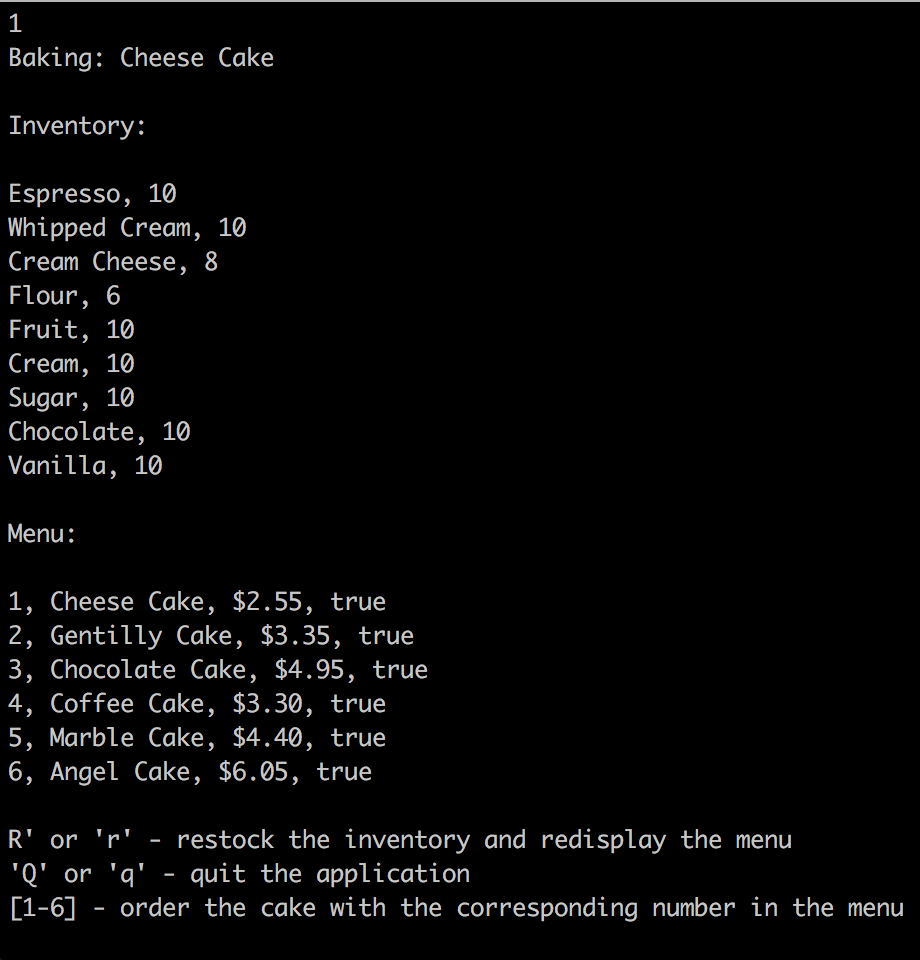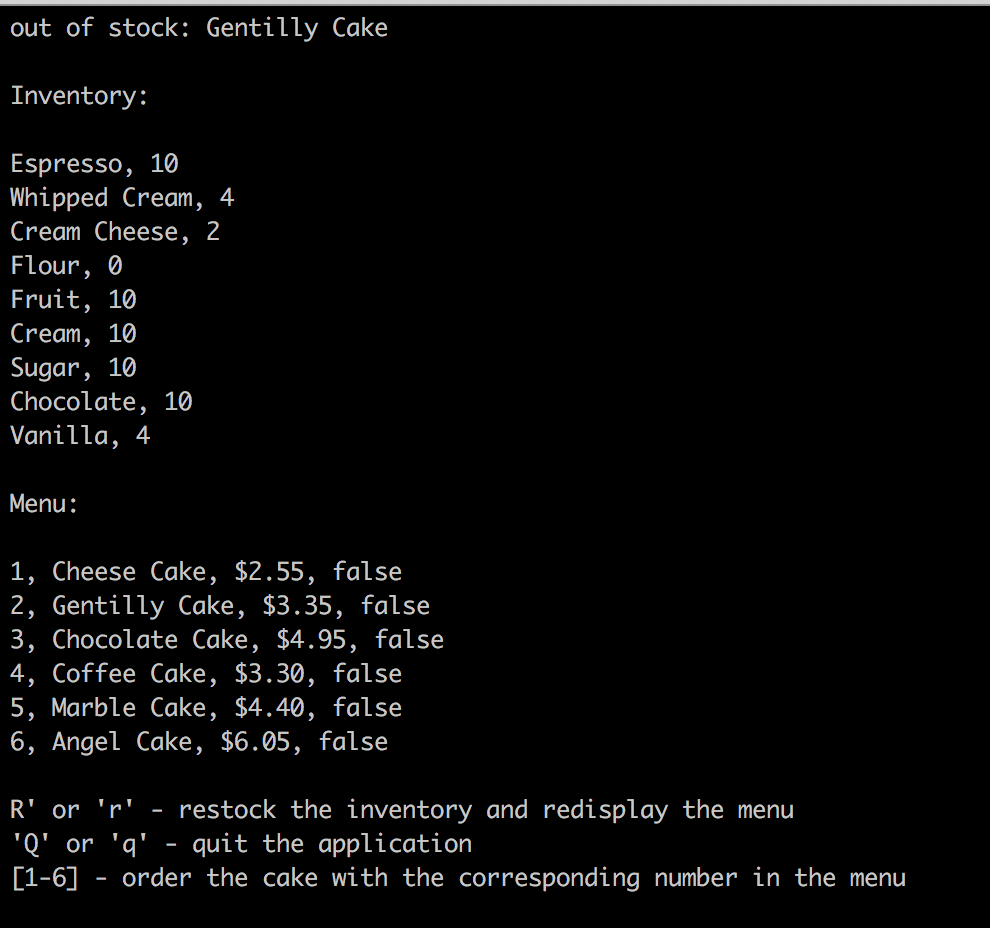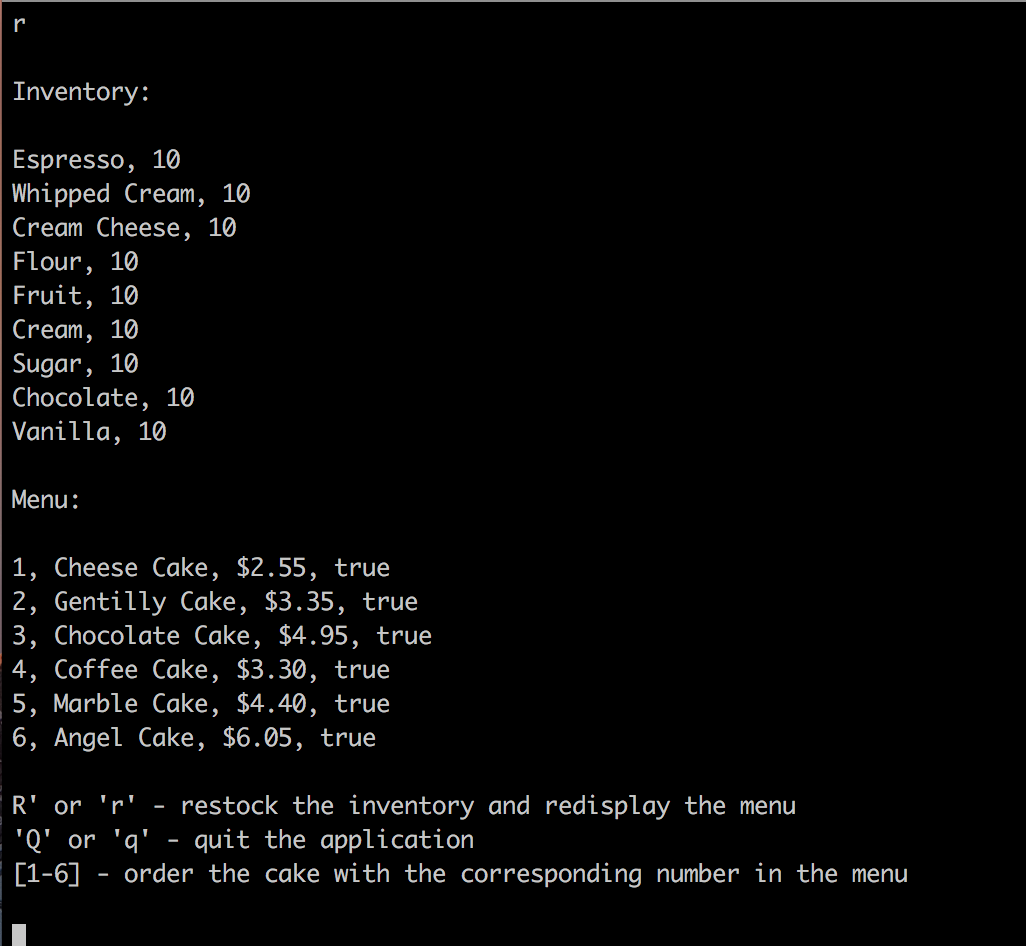Motivation
A project to learn Java and gain experience with TDD
What is bakeomatic
A Simple cake baking app that reads an inventory and cake mixes from a JSON file. When a cake is baked, the ingredients are reduced in inventory. The inventory can be restocked in the app.
Technologies
main: Java
testing: JUnit, Hamcrest
IDE: IntelliJ
Implementation
A user is presented with an initial inventory, menu, and list of options, they can then select a particular cake to bake

Inventory will run down if too many cakes are baked without re-stocking

If inventory is run down, it can be restocked using option ‘r’

Ingredients are an individual class which are loaded into the inventory class. The cakes are also a class which query the inventory to see if they are available.
public class Cake {
public String name;
public HashMap<String, Integer> ingredients;
private BigDecimal itemCost;
public Cake(String name){
this.name = name;
this.ingredients = new HashMap<String, Integer>();
}
public boolean isAvailable(Inventory inventory){
for(String name: this.ingredients.keySet()){
int itemQty = inventory.getItem(name).getQty();
if (itemQty == 0) {
return false;
} else if (itemQty < this.ingredients.get(name)){
return false;
}
}
return true;
...The logic loop is in the main class and the main methods and inventory used in the main loop are in the bakerlogic class
public class BakerLogic {
private HashMap<String, Cake> allCakes;
private Inventory inventory;
private ArrayList<Cake> availableCakes;
public BakerLogic(Inventory inventory){
this.inventory = inventory;
this.allCakes = new HashMap<>();
this.availableCakes = new ArrayList<>();
}One of the bigger challenges was writing the code for reading the JSON
public void loadInitialCakes(){
JsonObject rootObject = this.getRoot();
JsonObject cakes = rootObject.getAsJsonObject("cakes");
for(String cake: cakes.keySet()){
JsonObject ingredients = cakes.getAsJsonObject(cake);
Cake newCake = new Cake(cake);
for(String item: ingredients.keySet()){
newCake.ingredients.put(item, ingredients.get(item).getAsInt());
}
this.allCakes.put(cake, newCake);
}
}
...
private JsonObject getRoot(){
InputStream inputStream = getClass().getClassLoader().getResourceAsStream("initial.json");
Reader reader = new InputStreamReader(inputStream);
JsonParser parser = new JsonParser();
JsonElement rootElement = parser.parse(reader);
JsonObject rootObject = rootElement.getAsJsonObject();
return rootObject;
}Another challenge was implementing testing. I brought in a second framework to handle some assertions that I used to in Javascript.
import static org.hamcrest.CoreMatchers.containsString;
import static org.hamcrest.MatcherAssert.assertThat;
...
@Test
public void printsAdditionalOptions(){
this.baker.loadCakeOptions();
System.setOut(new PrintStream(outContent));
this.baker.printAdditionalOptions();
assertThat(outContent.toString(), containsString("order the cake with the corresponding number in the menu"));
}